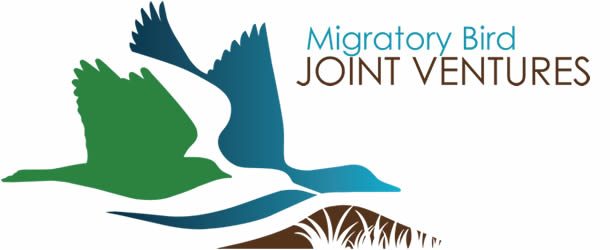The migratory bird joint venture (JV) coordinators recently held their annual meeting near Chicago, Illinois. This meeting was focused on a narrow agenda that required honest discussion and visionary thought. Given that JVs pride themselves on functioning as “self-directed” partnerships and they come from different regions throughout North America, divergent views and opinions filled the meeting room. Nevertheless, JVs hold dear an unwritten rule – “we rise and fall together.” With a partnership attitude and community success approach, the JV coordinators rose to the occasion and examined current challenges, ongoing strengths, and our future direction.
Consequently, the culmination of our discussion and debate resulted in a group agreement on the bullet points below. We hope these individual statements resonate with long-time partners along with new ones. Further, it is our desire that the statements inspire each individual JV’s efforts and launch us forward in addressing issues impacting migratory bird habitat conservation 5, 10, or 15 years forward. The bullets points – statements – are as follows:
CHALLENGES
- Landscapes across the continent continue to change in ways, and at scales, that are driving bird populations downward and increasing the likelihood of future Endangered Species Act listings.
- Societal action and positive influence in bird habitat conservation appears to be declining, indicative that the bird conservation community is not connecting with people to the degree that it did in recent decades.
- As a conservation community, we lack a basic understanding of both social and ecological drivers of landscape change.
BUSINESS MODEL (ONGOING STRENGTHS)
- We implement all elements of Strategic Habitat Conservation (SHC) at scales that influence populations, bringing a landscape perspective to local delivery. Through SHC we can articulate why, where, and how much habitat is needed, and how it should be most effectively delivered.
- We have a track record of making conservation entities stronger in ways that no one else can because we occupy a unique niche of supporting our conservation partners.
- We leverage a diversity of conservation expertise, and create collaborations at a variety of scales in ways that nobody else can.
FUTURE DIRECTION
- We will adapt to a rapidly changing social and ecological climate by increasing our relevance to long-term partners and by novel sources of capacity and resources through new partnerships.
- We will build upon SHC with a renewed emphasis on monitoring, while deploying new socio-political science and landscape design techniques that will result in better integrated implementation strategies with partners and others using the using the landscape.
- The JV community remains committed to our foundational objective of using Strategic Habitat Conservation to conserve habitat as needed to sustain populations of birds for future generations.
- The JV community embraces incorporating social science/human dimensions more explicitly into the conservation design and habitat implementation business of the JV enterprise.
- The self-directed JV Management Boards will define, prioritize, leverage, and lead implementation of social science/human dimensions work at the appropriate levels in their respective geographies.
- We will develop a more coordinated JV community that works across state, federal, JV, and international boundaries to address full annual cycle planning and conservation needs for migratory birds.
For more information, contact Casey Stemler, PPJV Coordinator

